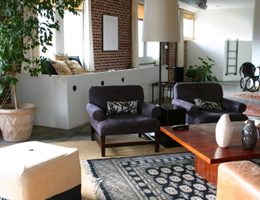 There are two different types of staging, depending on whether a home is occupied or vacant. “Most of us have too much stuff in our homes,” says Shell Brodnax, president of the Real Estate Staging Association, or RESA. One of the biggest tasks in staging an occupied home is reducing the clutter and depersonalizing the place. You’ll want to reduce the number of books on bookshelves, paint rooms in neutral colors and remove artwork that may evoke strong emotions, such as religious imagery or pictures of animals, Brodnax suggests.
There are two different types of staging, depending on whether a home is occupied or vacant. “Most of us have too much stuff in our homes,” says Shell Brodnax, president of the Real Estate Staging Association, or RESA. One of the biggest tasks in staging an occupied home is reducing the clutter and depersonalizing the place. You’ll want to reduce the number of books on bookshelves, paint rooms in neutral colors and remove artwork that may evoke strong emotions, such as religious imagery or pictures of animals, Brodnax suggests.
Furniture may also be moved around in an occupied home. “Sometimes it’s just a matter of taking what you have in one room and moving it to another,” Brodnax says. If you have a larger budget, you might want to tackle such tasks as changing the carpet or upgrading the countertops to make the home look more inviting.
A vacant home generally needs more work. “When buyers come in and look at a vacant home, all they look at are the problems — the cracks in the walls, the dirty piece of carpet,” says Keating.
To remedy that, a few pieces of rented furniture can give potential buyers more to focus on than the house’s flaws. A few plants and freshly painted walls can also help buyers envision themselves living in the property, which can lead to a sale.
Since every staging job is different, costs vary. For a consultation with a professional stager who will inspect your home and provide a list of suggestions, expect to pay about $350, says Barb Schwarz, founder of the International Association of Home Staging Professionals, or IAHSP. Homeowners can do the work themselves, or they can pay the stager to make the changes. If furniture or other supplies need to be rented, the homeowner will also pay the rental fees.
Staging a vacant home will likely be more expensive than staging an occupied home since you’re starting from scratch. “(Staging) a vacant home typically can cost less than 1 percent of the value of the house,” says Keating. “Occupied homes are typically way less than that because we’re using as much of the homeowner’s furnishings as possible.”
